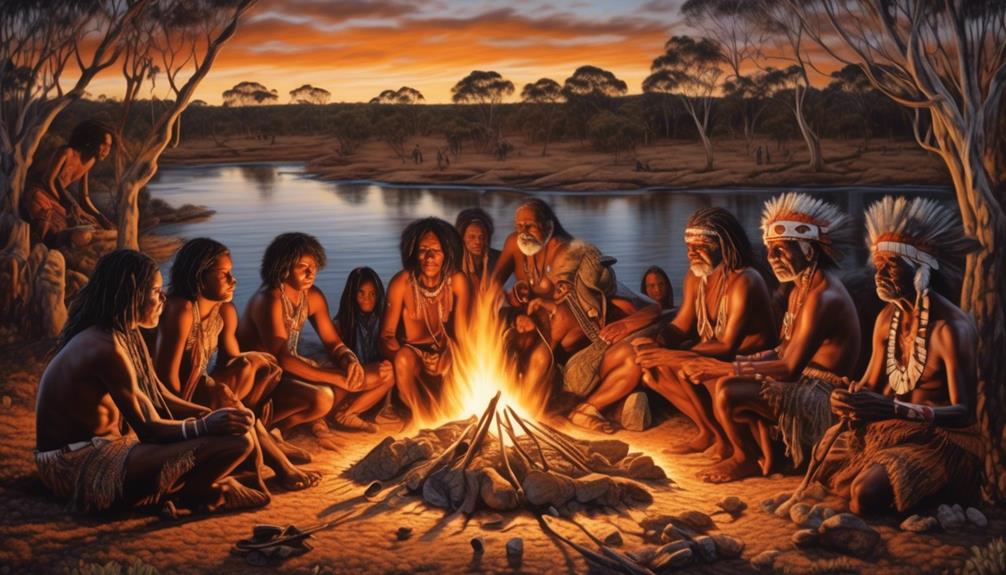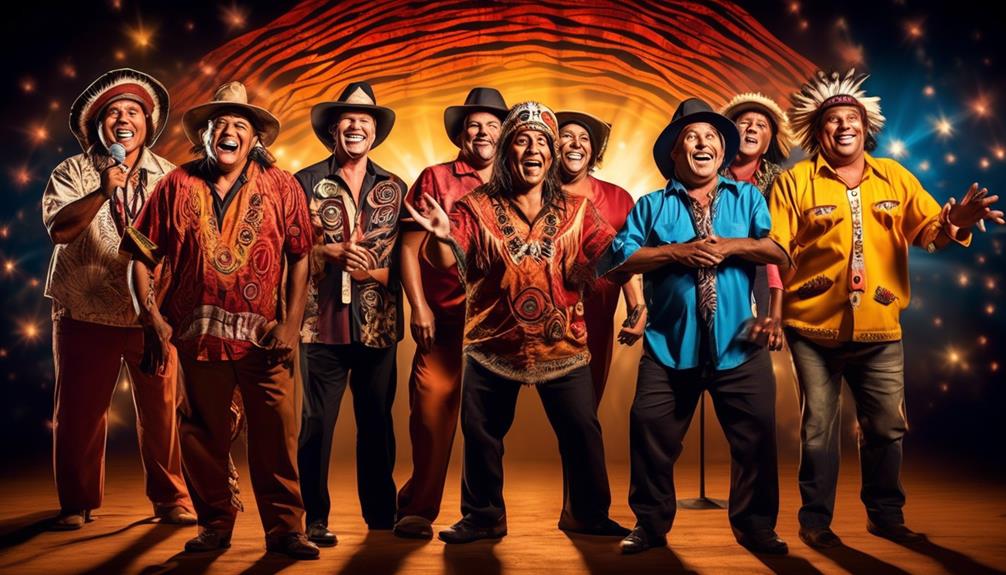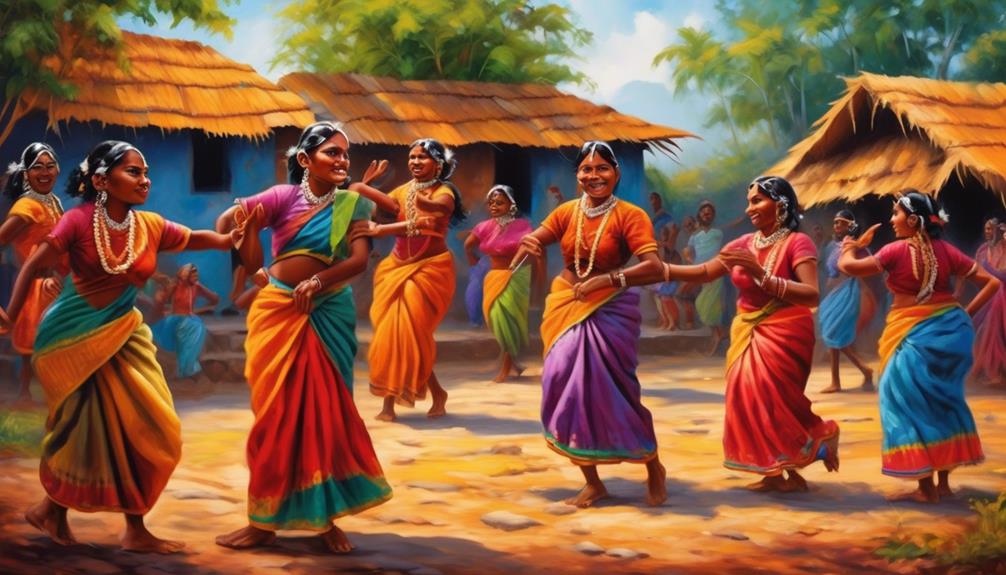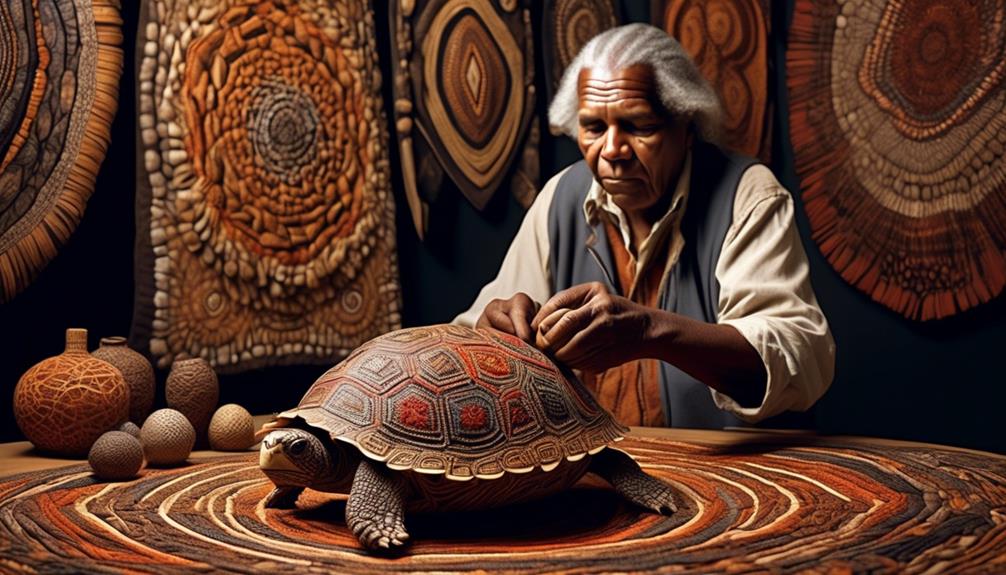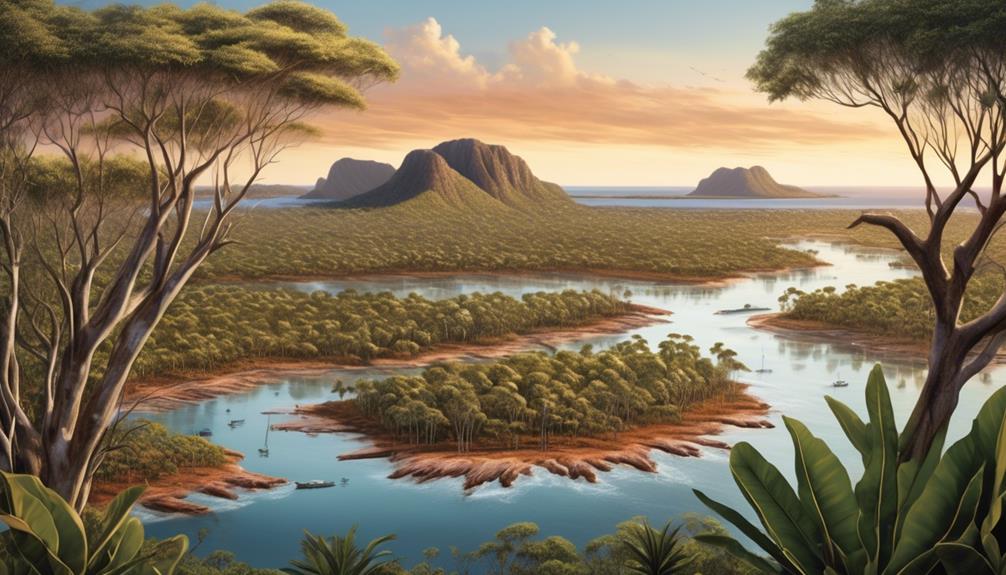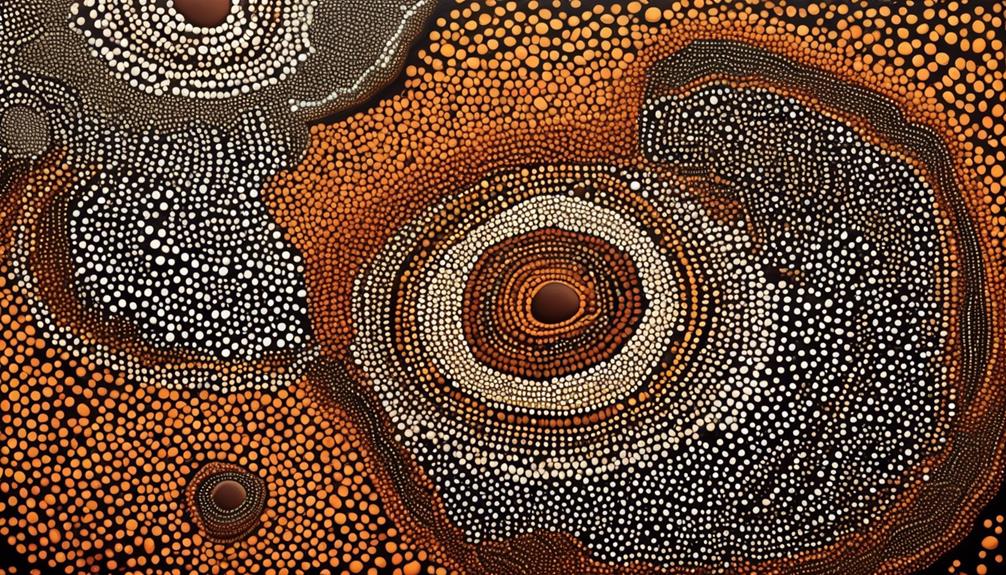In society, we often face a challenge in understanding the true identity of Aboriginal Australians.
On one hand, there's a wealth of historical and cultural knowledge that shapes their identity, and on the other, there are misconceptions and misunderstandings that cloud our perception.
The depth and complexity of the Aboriginal Australian identity is something that demands our attention and respect, as it holds the key to unlocking a richer understanding of this ancient and diverse culture.
Key Takeaways
- Aboriginal Australians have a long history and are the oldest living civilization on Earth.
- Indigenous resistance has been a significant aspect of their history, as they fought to protect their lands, rights, and cultural heritage from colonial impact.
- The colonial impact led to social and economic disparities that continue to affect Aboriginal Australians today.
- Aboriginal cultural traditions are a rich tapestry of customs, languages, and artistic expressions that have thrived for millennia.
History of Aboriginal Australians
The history of Aboriginal Australians is deeply intertwined with the land, culture, and traditions of the oldest living civilization on Earth. Indigenous resistance has been a significant aspect of this history, as Aboriginal Australians have continuously fought to protect their lands, rights, and cultural heritage from colonial impact.
The arrival of European colonizers in the late 18th century brought about immense changes for Aboriginal communities. The imposition of foreign laws, dispossession of traditional lands, and the introduction of diseases had devastating effects on the Aboriginal population. This colonial impact led to significant social and economic disparities that continue to affect Aboriginal Australians today.
Despite these challenges, Aboriginal Australians have displayed remarkable resilience and determination in preserving their identities and fighting for their rights. Through various forms of Indigenous resistance, including political activism, art, and cultural revitalization, they've worked tirelessly to reclaim their heritage and address the injustices of the past.
Understanding the historical context of Indigenous resistance and colonial impact is crucial in serving the needs of Aboriginal communities and working towards reconciliation and empowerment.
Cultural Diversity and Traditions
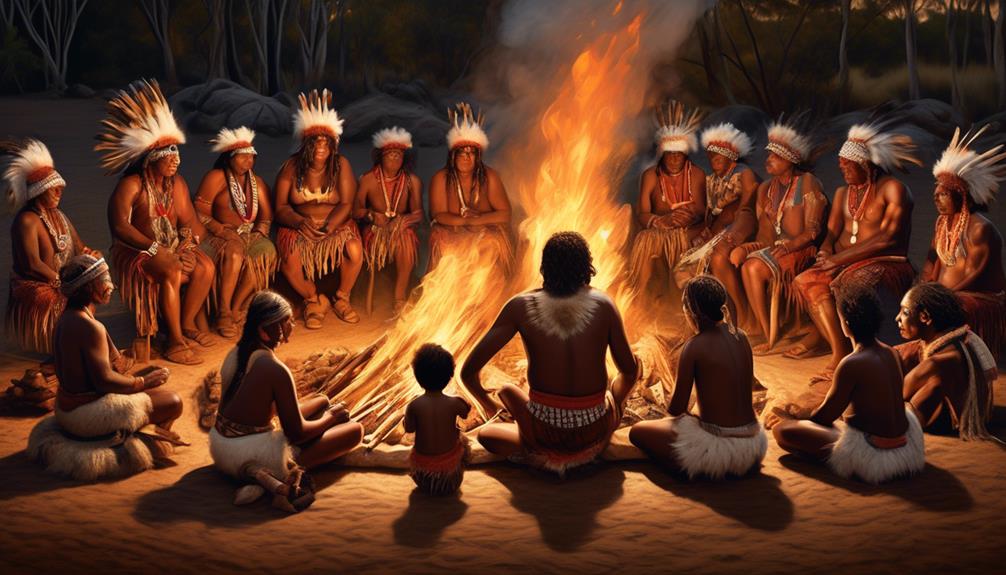
Deeply rooted in the diverse landscapes of Australia, Aboriginal cultural traditions are a rich tapestry of customs, languages, and artistic expressions that have thrived for millennia. This vibrant cultural diversity is manifested through various forms of artistic expressions, including intricate dot paintings, storytelling through song and dance, and the creation of traditional tools and artifacts.
Cultural celebrations play a significant role in preserving and passing down these traditions from one generation to the next. These celebrations often involve ceremonies, rituals, and performances that honor the land, ancestors, and the interconnectedness of all living things. The Dreaming, a complex network of knowledge, faith, and practices, underpins many of these cultural celebrations, providing a spiritual framework for understanding the world and one's place within it.
Additionally, traditional languages are integral to Aboriginal cultural diversity, serving as a vessel for passing down knowledge, stories, and customs. Efforts to revitalize and preserve these languages are crucial in ensuring the continuity of Aboriginal cultural traditions for future generations.
Spiritual Connection to the Land
With a profound spiritual connection to the land, Aboriginal Australians express their deep reverence for the natural world through intricate cultural practices and traditions. Spiritual practices are interwoven with the Aboriginal relationship to the land, reflecting a holistic understanding of the interconnectedness of all living things. Through ceremonies, storytelling, and art, they honor the land as a living entity, recognizing its significance in sustaining life and providing spiritual nourishment.
Land stewardship is a fundamental aspect of Aboriginal spirituality, emphasizing the responsibility to care for the land and ensure its vitality for future generations. This ethos guides their sustainable practices, such as traditional burning techniques to maintain the health of the landscape. The land isn't viewed merely as a resource but as a sacred inheritance that demands respect and custodianship.
The spiritual connection to the land also fosters a deep sense of belonging and identity for Aboriginal Australians, grounding them in their cultural heritage and providing a framework for ethical living. By upholding their spiritual traditions and land stewardship practices, Aboriginal communities continue to nurture a profound bond with the natural world, inspiring reverence and gratitude for the earth's abundance.
Challenges and Advocacy
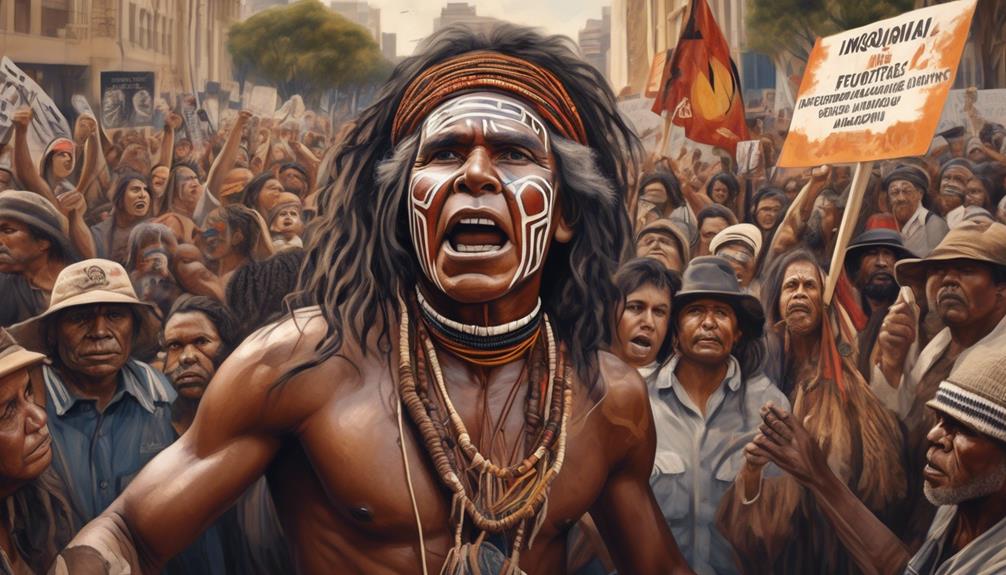
Navigating the complexities of contemporary society, Aboriginal Australians encounter a myriad of challenges in preserving their spiritual connection to the land while advocating for their rights and cultural heritage. These challenges stem from systemic issues that have historically marginalized Aboriginal communities, making advocacy efforts crucial for addressing these persistent issues.
Here are three key systemic challenges and advocacy efforts faced by Aboriginal Australians today:
- Land Rights and Environmental Advocacy: Aboriginal Australians continue to face struggles in reclaiming and protecting their traditional lands, which are often threatened by mining, logging, and other forms of development. Advocacy efforts focus on legal and political avenues to assert Aboriginal land rights and protect the environment.
- Health and Social Welfare Advocacy: Aboriginal communities experience significant health and social disparities compared to the general Australian population. Advocacy efforts aim to address these disparities through improved access to healthcare, culturally sensitive services, and social welfare support.
- Cultural Preservation and Education Advocacy: The preservation of language, cultural practices, and traditional knowledge is crucial for maintaining Aboriginal heritage. Advocacy efforts include initiatives to promote cultural education in schools, support for language revitalization, and the protection of sacred sites.
These systemic challenges necessitate ongoing advocacy efforts to ensure the rights, well-being, and cultural heritage of Aboriginal Australians are upheld in contemporary society.
Importance of Understanding Aboriginal Australians
Understanding Aboriginal Australians requires an informed awareness of their rich cultural heritage, historical experiences, and contemporary challenges. It's crucial to approach this understanding with cultural sensitivity and a commitment to social inclusion. By acknowledging the deep-rooted cultural heritage of Aboriginal Australians, we can foster a more inclusive and respectful society. This understanding enables us to appreciate the diversity and richness of their traditions, languages, and customs. Moreover, it allows us to recognize the impact of historical experiences, such as colonization and the Stolen Generations, on their communities. By understanding these aspects, we can work towards creating a more equitable and just society.
Cultural sensitivity is essential for building meaningful relationships and promoting a sense of belonging for Aboriginal Australians. It enables us to engage with their communities in a respectful and considerate manner. Furthermore, understanding their contemporary challenges, such as healthcare disparities and economic marginalization, is crucial for developing effective strategies to address these issues. By embracing cultural sensitivity and striving for social inclusion, we can contribute to a more equitable and harmonious society for all Australians.
Frequently Asked Questions
What Are Some Common Misconceptions About Aboriginal Australians?
Common misconceptions about Aboriginal Australians stem from a misunderstood identity and disregard for cultural preservation. These misconceptions often portray Aboriginal people as a monolithic group with outdated traditions and a lack of modernity.
However, this overlooks the diverse and dynamic nature of Aboriginal cultures, as well as their resilience and adaptability. It's important to recognize the richness and complexity of Aboriginal identities and the ongoing impact of colonization on their communities.
How Do Aboriginal Australians View the Concept of Time and History?
In aboriginal Australian cultural perspectives, temporal understanding is deeply interconnected with the land and ancestral knowledge. Time is viewed as cyclical, with events recurring in relation to natural phenomena.
This holistic approach to history and time emphasizes the interconnectedness of all things. This unique perspective challenges the linear concept of time prevalent in Western societies and invites a more profound reflection on the interconnectedness of past, present, and future.
What Are Some Current Issues Facing Aboriginal Communities in Australia?
Health disparities and land rights battles are current issues facing Aboriginal communities in Australia. These challenges greatly impact the well-being and autonomy of Indigenous peoples.
The lack of equitable access to healthcare and the ongoing struggle for land rights have significant repercussions on the social and economic conditions of Aboriginal communities.
Addressing these issues is crucial for promoting justice and empowerment within these marginalized populations.
How Do Aboriginal Australians Traditionally Pass Down Their Knowledge and Traditions?
Traditionally, Aboriginal Australians pass down their knowledge and traditions through oral storytelling and cultural ceremonies. These methods serve as the foundation for preserving our rich heritage and passing it on to future generations.
Through the art of storytelling and participation in cultural ceremonies, we maintain a deep connection to our history and ancestors. These practices are essential for keeping our traditions alive and ensuring that our cultural identity endures.
How Do Aboriginal Australians Feel About the Impact of Colonization on Their Communities Today?
When it comes to the impact of colonization on Aboriginal communities, it's crucial to acknowledge the deep and lasting effects it has had.
Aboriginal perspectives on this issue vary, but there's a shared commitment to cultural resilience, healing, and reconciliation.
Despite the challenges, many Aboriginal Australians are actively working towards reclaiming and preserving their traditions, fostering a sense of pride and identity.
This ongoing process is integral to the strength and vitality of our communities.
Conclusion
In conclusion, Aboriginal Australians have a rich history and diverse cultural traditions that are deeply rooted in their spiritual connection to the land.
It's important for us to understand and respect their heritage, as they face ongoing challenges and discrimination.
Did you know that there are over 250 distinct Indigenous language groups in Australia, reflecting the incredible cultural diversity of Aboriginal Australians?
This statistic highlights the need to appreciate and celebrate their unique cultural heritage.
Mary is a passionate writer who brings creativity and a fresh perspective to our team. Her words have the power to captivate and inspire, making her an essential contributor to our content. Mary’s commitment to storytelling and dedication to promoting Indigenous culture ensures that her work touches the hearts of our readers. We’re fortunate to have her as part of our team.
